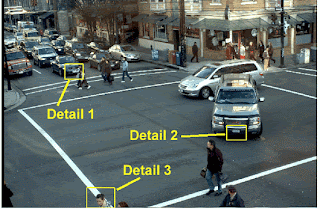Over the last few
weeks we’ve had to give advise to a few friends after their place was burgled.
So after looking into questions of personal and home safety, we arrived at
these tips for you to put into practice. If applied, these will give you and
your household greater protection.
1. This might seem obvious, but you’ll be surprised how many suburban homes are unlocked somewhere. So make sure all doors and windows have locks/deadlocks, USE THEM!
2. When you arrive
home have your key handy so you are not standing there fumbling around making
yourself an easy target.
3. Keep doors locked
even when you or family members are at home.
4. Have locks
installed on your fuse boxes and external power sources.
5. If you arrive by
car at night always leave your headlights on until you have opened the front
door or garage.
6. Have motion lights
fitted or leave on an outside light at night.
7. Make sure you know
who is at the front door before opening it. Have a door viewer fitted so
you can clearly see them and they can’t see you. The old chain-lock you find in
cheap hotels, DO NOT offer protection.
8. When you first
purchase your house or apartment get the locks and keys changed.
9. Be aware of unknown
visitors at your door asking to use the phone or some other item. Ask them
to wait in a well lit area away from your door and make the phone call for them
without letting them in (you will know whether to call their number or the
Police based on how they respond).
10. When someone phones
with a wrong number never give them your correct number. Should you
receive an obscene phone call, hang up and call the police.
11. Try to remain
anonymous by:
· Not using your full
name on Facebook and other online social sites.
· Not using your
photo for a profile and have your security settings set high so only your
friends can see your photos.
· Do not use you name
or initials as a customized vehicle number plate, in fact keep the standard
number plate, they’re harder to remember and that’s a good thing.
· Get rid of those
ridiculous “My Family” stickers. (Why tell the stalker you have more than one
daughter?)
12. Think about putting
in a monitored alarm system.
13. Have security
cameras fitted with a recorder so that if you are burgled/robbed there is a
record for the police. It is important to have a dated and timed
recording.
14. When you arrive
home if you are suspicious that someone is inside your house go immediately to
the local Police or another secure place (relatives, friends or known
neighbor’s house).
15. If you are still
concerned for your safety, try the GSM watch with available from Cams in
Action, which will dial your emergency or next of kin contact at the press of
one button and send an SMS to that number with your GPS coordinates! Pretty
cool gadget really!
 Well hopefully these points will help you solve some of
your safety concerns. Remember the list of tips does not stop here or guarantee
total protection. When thinking of possible personal safety scenarios, we
always came back to the term ‘situational awareness’. If you will let your
guard down in the safety of your home, make sure you have systems in place to
make your home “safe”. If you have specific concerns or if you have experienced
threats, contact the Police straight away.
Well hopefully these points will help you solve some of
your safety concerns. Remember the list of tips does not stop here or guarantee
total protection. When thinking of possible personal safety scenarios, we
always came back to the term ‘situational awareness’. If you will let your
guard down in the safety of your home, make sure you have systems in place to
make your home “safe”. If you have specific concerns or if you have experienced
threats, contact the Police straight away. 


